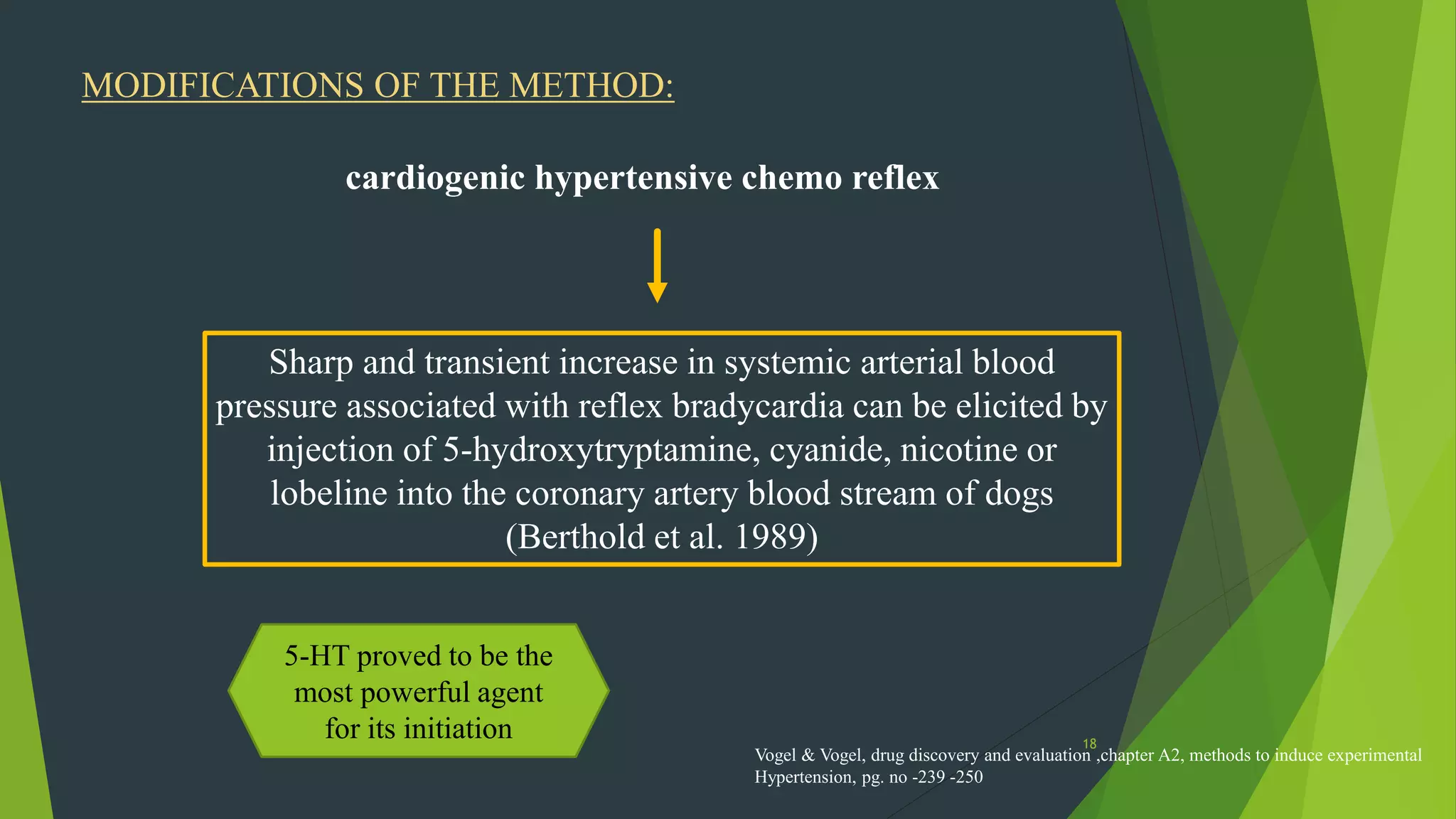This document discusses screening methods for antihypertensive agents. It begins with an introduction on hypertension and its prevalence. It then discusses various animal models used to study hypertension including spontaneous hypertensive rats. It provides details on several in vivo and in vitro screening models for inducing and studying hypertension including acute renal hypertension in rats, chronic renal hypertension in rats and dogs, and genetic hypertension in rats. It describes procedures, evaluations, and modifications of these methods. The goal is to utilize animal models that replicate features of human hypertension to screen for new antihypertensive agents.
















![17
Increase in blood pressure is determined after reopening of the
renal artery.
Reduction in blood pressure is determined after administration
of the test drug.
Percent inhibition of hypertensive blood pressure values under
drug treatment are calculated as compared to pretreatment
hypertension values.
Duration of the effect is determined [min].
Statistical significance is assessed by the paired t-test.
EVALUATION :
Vogel & Vogel, drug discovery and evaluation ,chapter A2, methods to induce experimental
Hypertension, pg. no -239 -250](https://image.slidesharecdn.com/screeningmethodsofantihypertensiveagents-210826053939/75/Screening-methods-of-anti-hypertensive-agents-17-2048.jpg)
















































